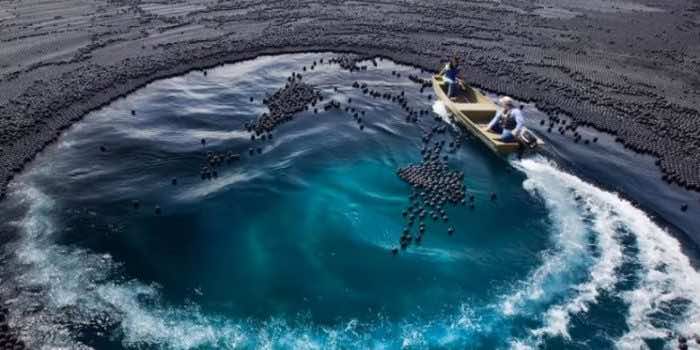Millions of little black plastic balls float on the surface of a drinking water reservoir in Los Angeles. Science is responsible for the existence of this fascinating ball pit.
Veritasium, better known as Derek Miller, a popular YouTuber, went to the reservoir in Los Angeles to find out why these black plastic balls were there. He claims that he assumed that they reduced evaporation when he first heard about shade balls.

Despite their reputation for conserving water, the balls are not here to prevent evaporation. Instead, they serve a single purpose: to inhibit the development of harmful carcinogenic compounds.

Bromide, a naturally occurring chemical present in saltwater, was the source of the issue. Bromide is not harmful to people on its own, but if some of this salty water seeps into the reservoir and is treated with ozone alongside the rest of LA’s drinking water, it can generate the compound bromate. Bromate is also a carcinogen.
The Los Angeles Department of Water and Power thought it was monitoring bromate levels, but for some reason, the carcinogen kept rising as the water entered the reservoir. When bromide and chlorine combine with sunshine, they generate significantly more bromate than when the former reacts with ozone.
The idea, called “bird balls” at the time, was strange and oddly fitting. The black balls, which are commonly used at airports to keep birds from perching in nearby water, have also shown to be highly effective in blocking out light.

Furthermore, the carbon black colour of the ball allows each sphere to function for up to 10 years without leaking harmful waste into the water below. Further, once these balls are set on the reservoir, the treatment facility will be able to use less chlorine to combat algal development, which thrives in bright sunshine.
While evaporation was not the intended purpose of these balls, they certainly keep the water beneath them significantly cooler.
“So for all of these reasons, shade balls reduce evaporation by 80 to 90 percent,” Derek explains. “That’s pretty significant for a dry climate like Los Angeles.”
The balls are constructed of high-density polyethylene (HDPE), which is less dense than water and will float on the reservoir’s surface even if they break apart. They measure 10cm (4 inches) in diameter and hold around 210ml of water.
To learn more about the effect of these black balls and how they were placed into this reservoir, watch the video below:


